Products
Products
Raman plate reader
The Identity Raman plate reader from Digilab is designed for the high-throughput measurement and identification of multiple samples in microtiter plates or slides using Raman spectroscopy. The reader can be used with 96- or 384-well microtiter plates, glass slides, or an optional tablet holder. According to the company, samples in a 96-well plate can be measured and analyzed in under 5 min. The reader reportedly can be configured with either a 532- or 785-nm laser. Optional plate adaptors are available for measuring liquids, powders, and solid samples. Digilab, Inc., Holliston, MA;
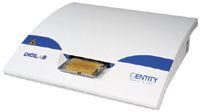
FT-NIR spectrometer
The MB3600-PH FT-NIR spectrometer from ABB Analytical is designed for use in the pharmaceutical and life science industries. The benchtop analyzer can be fitted with various accessories for measurements in applications such as laboratory QA/QC analysis, raw material identification and qualification, research and development, NIR method development, and at-line process analytical technologies measurements. According to the company, the instrument can be operated without scheduled maintenance for 10 years. ABB Analytical, Quebec, Canada;

UV–vis–NIR microspectrophotometer
The 20/20 Perfect Vision UV–vis–NIR microspectrophotometer from CRAIC Technologies is designed for nondestructive analysis of microscopic samples at wavelengths ranging from the deep ultraviolet to the near infrared. Samples can be analyzed by absorbance, reflectance, luminescence, and fluorescence, and the system reportedly can be configured to image microscopic samples in the UV and NIR regions in addition to color imaging. According to the company, applications for the instrument include forensic analysis of trace evidence, vitrinite reflectance of coal, spectral analysis of minerals, measurement of protein crystals, contamination analysis, and thin-film measurement of semiconductors, hard disks, and flat-panel displays. CRAIC Technologies, San Dimas, CA;

Handheld XRF analyzer
The S1 TURBOSDR handheld X-ray fluorescence analyzer from Bruker is intended for quick, nondestructive testing for lead-free manufacturing, RoHS compliance, and the detection of heavy metals in toys and consumer products. According to the company, the analyzer can detect restricted materials such as lead, mercury, chrome, bromine, and cadmium at part-per-million levels. Bruker AXS Inc., Madison, WI;
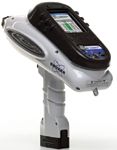
Environmental application note
An application note from Teledyne Leeman Labs describes the determination of soils, sediments, and sludges to meet US EPA Method 245.5. The note details the operation of the company's Hydra IIAA mercury analyzer for determining mercury by cold vapor atomic absorption spectroscopy. Elevated levels of mercury often can be found in areas where gold mining, chlor-alkali production, or paper manufacturing have taken place or in soils exposed to runoff from landfills containing objects with high mercury content. Teledyne Leeman Labs, Hudson, NH;
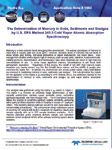
DPSS laser
The CONCERTO DPSS laser from KLASTECH is designed to provide continuous wave output at 442 nm. The laser reportedly is smaller than traditional He-Cd lasers, with a length of less than 200 mm. The laser's beam pointing stability reportedly is less than 10 μrad/°C, and its life is projected to be greater than 10,000 h. According to the company, the laser's rms noise is less than 0.5%, the long-term power stability is less than 2%, the line width is less than 1 MHz, and the coherence length is greater than 100 m. KLASTECH-Karpushko Laser Technologies GmbH, Dortmund, Germany;
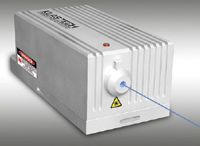
Raman spectrometer
BaySpec's 1stGuard Raman spectrometer is designed for use by law enforcement and emergency response personnel to quickly and accurately identify unknown chemicals on the spot. The battery-operated, ruggedized instrument can be used to detect and identify narcotics and intermediates, illicit street drugs, explosives, hazardous materials, spilled and leaked chemicals, and chemical warfare agents. According to the company, the instrument is intended for field use with a battery life of more than 4 h. Identification reportedly is based on the chemical fingerprint at the molecular level. BaySpec, Inc., Fremont, CA;
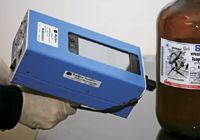
Confocal mapping FLIM system
HORIBA Scientific's DynaMyc microfluorescence dynamics imaging system is designed to provide information about molecular motion, sizes, local environment, interaction, and binding, with discrimination to microscopic locations in the sample. According to the company, the system generates lifetime images more than 20 times faster. The system reportedly provides a range of interchangeable excitation wavelengths. HORIBA Scientific, Edison, NJ;
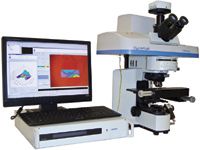
ICP-MS system
The PerkinElmer Sciex NexION 300 ICP-MS system provides standard, collision, and reaction modes of operation. In standard mode, the system's cell reportedly is turned off for use with elements that require no interference correction. In collision mode, the system can be used for semiquantitative analyses, environmental sample monitoring, and the testing of unknown samples. According to the company, the instrument's reaction mode removes interferences without loss of analyte sensitivity and features a scanning quadrupole that allows only the element of interest to pass to the analyzing quadrupole. PerkinElmer Inc., Waltham, MA;

Mid-IR systems
The PAIR2 mid-infrared systems from PAIR Technologies are designed to enable scientific investigators to observe rapid changes in molecular systems by monitoring chemically significant functional groups. The modular systems can be reconfigured with various sources for nondestructive measurement of solids, liquids, or gases. The sample compartment module reportedly allows the use of sampling accessories such as transmission, ATR, and diffuse reflection. According to the company, the spectrograph module has no moving parts and allows choices of various grating combinations and detector modules to optimize the relationship between wavelength range and spectral resolution. PAIR Technologies, LLC, Newark, DE;
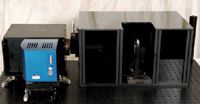
Wire-grid polarizers
Wire-grid polarizers from Moxtek are designed for spectroscopy and instrumentation. According to the company, wire-grid polarizers allow a single polarizer to cover a broad range of wavelengths and enable simplified light management because of their large acceptance angles. The polarizers function over the UV to IR wavebands and can be used at normal incidence. Wire-grid polarizers with reduced reflection are also available. Moxtek, Inc., Orem, UT;
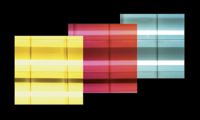
Handheld radiation detector
The Abacus digital radiation detector is designed to provide sensitivity to low levels of alpha, gamma, and X-rays and can be used with Windows Mobile, Palm Pilot, or Windows computers. The wireless, handheld detector reportedly performs gamma subtraction for beta sensitivity. According to the company, the instrument's software displays a variety of units along with timed counts, controls audio, and saves surveys for analysis and sharing with Bluetooth. SE International, Inc., Summertown, TN;
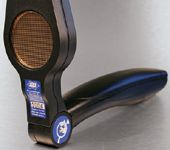
Content uniformity measurement system
The AccuRA nondestructive, at-line tablet and capsule content uniformity measurement system from HORIBA Scientific is based on Raman spectroscopy. According to the company, the system's transmission-mode measurement geometry samples nearly the entire volume of the dosage form to provide results that correlate with current off-line destructive methods. The system is designed to provide results in a few seconds or less. HORIBA Scientific, Edison, NJ;
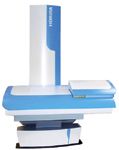
Standard kit
SPEX CertiPrep's "SPEX IQ" standard kit includes high-purity standards packaged in single-use volumes that can be customized to a laboratory's specific calibration needs with any of the company's 4000-plus stock standards. The company also can package a laboratory's own standards. According to the company, the kit offers up to a year's supply of standards guaranteed accurate every time. SPEX CertiPrep, Inc., Metuchen, NJ.

Optical filters
Optical filters designed with sputtered coatings are available from CVI Melles Griot. The narrowband, broadband, and edge filters for fluorescence, microscopy, flow cytometry, and image processing reportedly provide 5–6 OD blocking and maintain a transmission of greater than 98%. According to the company, standard and custom designs are available. CVI Melles Griot, Carlsbad, CA;
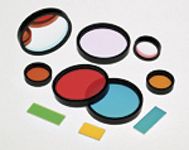
Sample transmission probe
Aabspec's Dual Sample Transmission probe is designed for use with the company's #S and #SX multimode spectroscopy–microscopy systems. The probe is formed from a single piece of 316 stainless steel with no welds or brazes and reportedly provides lower thermal mass with integral sample temperature read-out. The probe can be used at temperatures ranging from -150 °C to 600 °C and pressures ranging from ultrahigh vacuum to 1000 psi. Applications include polymer, adhesive, catalyst, and materials research. Aabspec Instrumentation Corp., Plainview, NY;
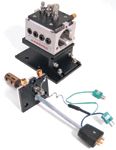
Peltier sample compartment
The qpod 2e sample compartment from Quantum Northwest is designed to provide Peltier temperature control for fiber-optic spectroscopy. The sample compartment reportedly can be controlled from a computer via Bluetooth wireless or USB. According to the company, temperatures can be controlled from –30 °C to +105 °C or complex temperature ramping functions can be performed. Three kits are available with fused-silica optics for absorbance, fluorescence, or combined measurements. Quantum Northwest, Liberty Lake, WA;
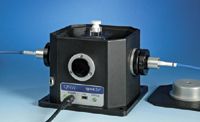
ATR accessory
The GladiATR Vision attenuated total reflection device is designed to couple small-area infrared analysis with simultaneous viewing. According to the company, the device's diamond crystal enables analysis of thick or nontransparent samples. The accessory reportedly is compatible with most FT-IR spectrometers. Pike Technologies, Madison, WI;
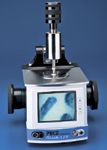
Cell cleaning agent
HELLMANEX II alkaline concentrate from Hellma is intended for use in cleaning cells and optical components. The concentrate is used at a maximum dilution of 2%, and the ingredients reportedly include no corrosive substances. The phosphate-based cleaning agent is available in 0.5- and 1-L bottles. According to the company, the cleaning agent provides optimum wetting of all surfaces. Hellma USA, Inc., Plainview, NY;
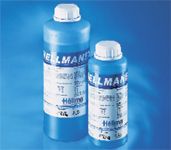
Mass spectrometers
The LTQ Velos and LTQ Orbitrap Velos mass spectrometers from Thermo Fisher Scientific are designed for coupling to UHPLC systems. The former system features a dual-pressure trap design and API source; two discrete pressure regions reportedly allow the decoupling of ion manipulation and detection. According to the company, the latter system combines the company's Orbitrap mass analyzer, a higher-energy collisional dissociation cell, and a dual-pressure trap design; applications include molecular weight determination of intact proteins and analysis of isobaric species. Thermo Fisher Scientific, Inc., Waltham, MA;
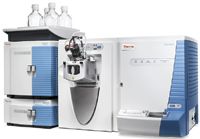
FT-IR brochure
A 20-page online brochure from Varian describes the company's 600-IR series instrumentation for FT-IR analysis. "Solutions for Polymers and Materials" lists various applications for the instruments, including the analysis of raw materials, surface modification and reaction dynamics, and sample heterogeneity and contaminant identification. Full-color figures illustrate each section. A cross-sectional diagram shows the various components of the instruments. The brochure can be accessed at www.varianftir.com/ebrochure-pm.html. Varian, Inc., Walnut Creek, CA;

Silicon drift detectors
Amptek's 25-mm2 silicon drift detectors are designed for X-ray fluorescence applications ranging from OEM handheld instruments to bench-top analyzers. The detectors reportedly have 129 eV FWHM, an 11.2-μs peaking time, and a peak-to-background of 8000. According to the company, the detectors are housed in a TO-8 package and require no liquid nitrogen. Amptek Inc., Bedford, MA;
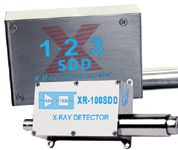
Spectrophotometer brochure
Shimadzu's full-color brochure, "Measurement of Transmission and Reflectance of PV Materials and Cells," describes applications for the company's UV–vis–NIR spectrophotometers. The publication reportedly explains the role of the SolidSpec-3700 and UV-3600 spectrophotometers in the manufacture of solar cell materials, cells, and modules. According to the brochure, the instruments reduce the measurement workload and achieve more efficient nondestructive analysis of PV materials. Shimadzu Scientific Instruments, Inc., Columbia, MD;

Fluorescence spectrophotometer
The model F-2700 fluorescence spectrophotometer from Hitachi High Technologies America is available in standalone and PC-controlled configurations. The instrument reportedly features a signal-to-noise ratio of 800 rms for the Raman band of water at a 5-nm bandwidth. According to the company, with PC control the scan speed is as high as 12,000 nm/min, which makes the spectrophotometer useful for 3-D scan measurements. Accessories available for the instrument include automatic sampling, quantum yield measurement, spectral correction, and a 100-μL microcell. Hitachi High Technologies America, Inc., Pleasanton, CA;
www.hitachi-hta.com/spectroscopy
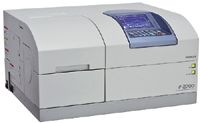
Raman microscope with AFM
WITec's alpha500 confocal Raman microscope is designed to combine 3-D chemical imaging and atomic force microscopy for structural imaging in an automated system. The system includes a motorized sample stage that allows multiarea, multipoint measurements or overview scans on a user-defined number of points. The system's automated functions include integrated autofocus and an AFM-tip approach. WITec Instruments Corp., Savoy, IL;

Holographic polarizers
Specac's holographic polarizers are available on barium fluoride, calcium fluoride, KRS-5, and zinc selenide substrates and are manufactured at 2500 lines/mm. The polarizers are available in standard sizes of 25 mm or 50 mm diameter. Applications include the polarization of radiation for unpolarized sources, attenuation of radiation from polarized sources, infrared spectroscopy of materials, and NIR and mid-IR thermal imaging. Specac, Inc., Woodstock, GA;

Mercury analyzer
The model RA-3000 Gold+AFS mercury analyzer from Nippon Instruments is designed for EPA Method 1631E. According to the company, the analyzer simplifies low- to sub-parts-per-million mercury analysis and reduces reagent consumption and wastes. Nippon Instruments North America, College Station, TX;
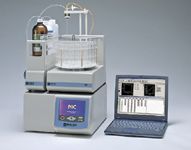
ICP spectrometer
The iCAP 6000 Series ICP emission spectrometer from Thermo Fisher Scientific is designed for trace element analyses in high-throughput elemental analysis laboratories. According to the company, the instrument has been used successfully in analyzing feedstock and biodiesel to be sold as fuel or blending stock. The spectrometer reportedly enabled improved productivity and ensured regulatory compliance. Thermo Fisher Scientific, Waltham, MA;


New Study Reveals Insights into Phenol’s Behavior in Ice
April 16th 2025A new study published in Spectrochimica Acta Part A by Dominik Heger and colleagues at Masaryk University reveals that phenol's photophysical properties change significantly when frozen, potentially enabling its breakdown by sunlight in icy environments.